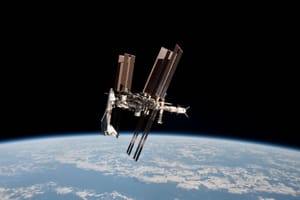
Nov 1, 2023
Through ups and downs, humanity achieves 23 years straight in orbit
The last two decades have been quite the bumpy ride for humans. But throughout it, one thing has been constant: a continuous presence aboard quite possibly the world's best-known laboratory, the orbiting, International Space Station.
The ISS is just as much a triumph of geopolitics as it is one of technical achievement; despite recent hiccups as a result of the Russia-Ukraine war, it has been a place of unity and international cooperation unmatched by any program on the ground. Originally launched in November 1998, its creation involved close collaboration between the United States, Russia, the European Union, Japan, Canada, and countless other partners. Construction lasted into the 2010's and never truly finished, with the most recent addition being the problematic Russian Nauka module in 2021.
On October 31, 2000, the first crew destined for the ISS, Expedition 1, lifted off, aboard Soyuz TM-31 from Baikonur Cosmodrome in Russia. The crew comprised of Yuri Gidzenko and Sergei Krikalev of Russia, and William Shepherd of the United States, who, upon reaching and docking with the young Station on November 2, quickly got to work unpacking and readying it for future flights.
This article was longer but suffered from loss of information during a server migration.



